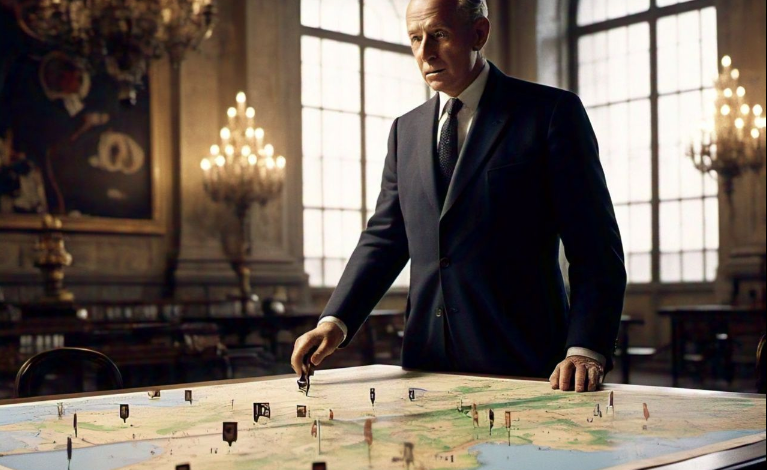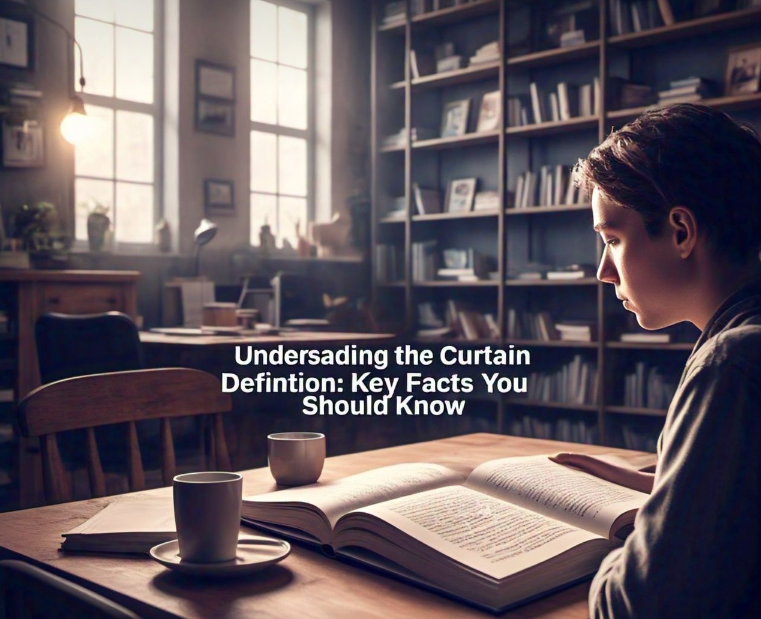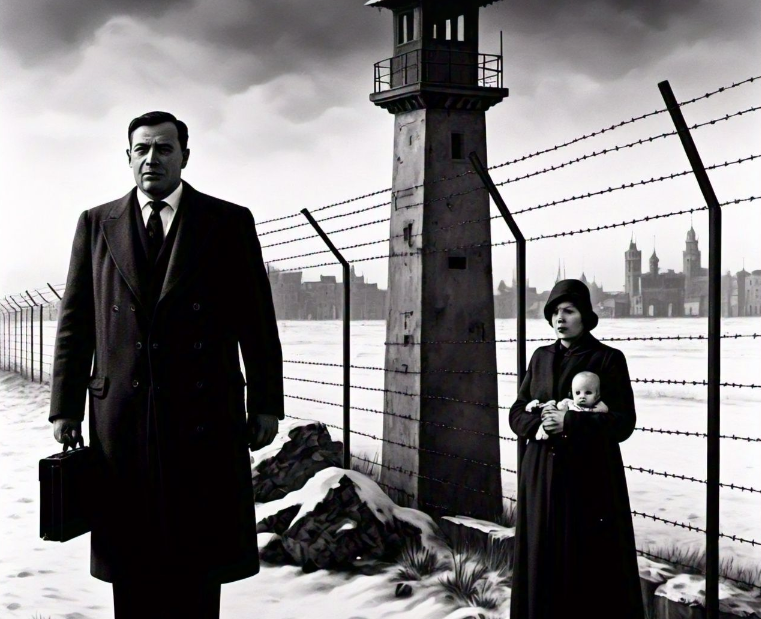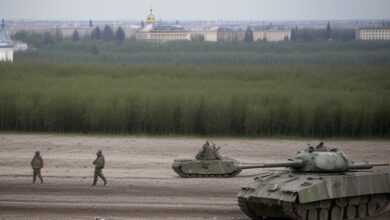What is the Iron Curtain Definition Understanding Its Meaning and Impact

The Iron Curtain definition refers to the political, military, and ideological barrier that separated Eastern and Western Europe during the Cold War. It was created by the Soviet Union after World War II to isolate itself and its satellite states from the West. The term “Iron Curtain” was first used by Winston Churchill in 1946 to describe this separation between communist and non-communist countries.
The Iron Curtain played a major role in shaping Europe’s political landscape for nearly 45 years. Countries like East Germany, Poland, and the Soviet Union were on one side, while NATO members, like the United States and its allies, were on the other. This division lasted until the fall of the Berlin Wall in 1989, which marked the beginning of the end of the Iron Curtain.
Table of Contents
The Iron Curtain Definition: What Does It Mean

The Iron Curtain definition refers to a strong barrier that divided Europe into two parts after World War II. This term was used to describe the separation between the communist countries controlled by the Soviet Union and the free nations in Western Europe. The Soviet Union built this “curtain” to keep the communist countries isolated from the outside world, especially from the West.
The Iron Curtain wasn’t a physical wall at first. It was more of an idea, a way to block off information and influence from other countries. It lasted for many years, until the fall of the Berlin Wall and the end of the Cold War. The term became famous after Winston Churchill used it in a speech in 1946.
A Look Back at the Iron Curtain’s Role in the Cold War
During the Cold War, the Iron Curtain symbolized the deep divide between two major political powers: the Soviet Union and the United States. This period was marked by tension and fear, as both sides built up their military forces and tried to expand their influence. The Iron Curtain helped create a “them versus us” mentality in Europe.
Many countries in Eastern Europe were forced to follow Soviet rules. These countries were part of the Eastern Bloc, while the countries in the West, like those in NATO, stayed free and democratic. The Iron Curtain kept people and ideas apart, making it difficult for East and West to communicate or share information.
How the Iron Curtain Divided Europe and Shaped History
The Iron Curtain wasn’t just a physical wall; it also changed the way people lived in Europe. In the East, the Soviet Union controlled many nations, making life harder for the people who lived there. They had limited access to information and freedom. On the other hand, Western European countries enjoyed more freedoms and were able to build stronger economies and democratic governments.
This division lasted for decades. It was not just about politics—it was about the way people in different countries saw the world. The East and West had different values, cultures, and ways of life. The Iron Curtain made sure these differences stayed strong and separated the two sides for many years.
Understanding the Iron Curtain Definition: Key Facts You Should Know

The Iron Curtain was not just about the governments on each side. It also affected everyday people. People in the East were often cut off from family and friends in the West. Travel between East and West was nearly impossible, and those who tried to cross the borders often faced danger.
Over time, though, the Iron Curtain began to weaken. People in Eastern Europe wanted change, and peaceful protests and revolutions started to happen. This led to the fall of the Berlin Wall and the end of the Iron Curtain. In 1990, the Soviet Union lost its power, and many Eastern European countries became free.
The Fall of the Berlin Wall
The Berlin Wall, which divided East and West Germany, was one of the most powerful symbols of the Iron Curtain. When the wall finally fell in 1989, it showed that the Iron Curtain was coming to an end. People were finally able to cross the border, and the divide between East and West Europe started to disappear.
The End of the Iron Curtain: How the Division Came to an End
The Iron Curtain finally began to fall during the late 1980s and early 1990s. One of the biggest reasons for this was the Soviet Union’s weakening power. The Soviet leader, Mikhail Gorbachev, introduced reforms that allowed Eastern European countries to gain more freedom. This led to many peaceful protests in places like Poland, Hungary, and Czechoslovakia.
The fall of the Berlin Wall in 1989 was a key moment in ending the division. Soon after, countries in Eastern Europe gained their independence from the Soviet Union. In 1991, the Soviet Union itself dissolved, and the Iron Curtain was no longer needed.
How the Iron Curtain Ended
The Iron Curtain’s end was marked by a series of peaceful changes. Countries like Poland and Hungary held free elections, and the people began to build new governments. The fall of the Berlin Wall helped bring people together from both sides of the divide, leading to the reunification of Germany.
The Berlin Wall and the Iron Curtain: How They Were Connected
The Berlin Wall was one of the most famous parts of the Iron Curtain. Built in 1961, it physically separated East and West Berlin. The wall was a clear sign of the division in Europe, with East Berlin under communist control and West Berlin free and democratic. The Berlin Wall became a symbol of the struggles faced by those on the Eastern side of the Iron Curtain.
The wall was heavily guarded, and many people tried to escape across it. Some even lost their lives in the attempt. The fall of the Berlin Wall in 1989 was one of the most important events in history, signaling the end of the Iron Curtain and the Cold War.
Why the Iron Curtain is Still Important to Understand Today
Even though the Iron Curtain ended decades ago, its legacy still affects Europe today. Understanding the Iron Curtain helps us see how powerful political forces can shape history and the lives of everyday people. It also reminds us of the importance of freedom and communication between countries.
The end of the Iron Curtain also marks the beginning of a new Europe, where many countries are now part of the European Union and NATO. Learning about the Iron Curtain helps us understand how far Europe has come and why peace and cooperation between nations are so important.
The Iron Curtain’s Influence on Culture and Society

The Iron Curtain had a significant impact not only on politics and economics but also on the culture and daily lives of people in Europe. On the eastern side, people had limited access to Western culture. This meant that movies, music, and books from the West were hard to come by. In some cases, these were banned or heavily censored by the governments in Eastern Europe.
In contrast, countries in the West had greater freedom to share ideas and express themselves. Western culture, including movies, fashion, and music, became popular across the globe. But for those behind the Iron Curtain, this connection to the rest of the world was restricted. Many Eastern Europeans found creative ways to experience Western culture, often through underground channels or by smuggling in foreign media.
Creative Resistance Behind the Iron Curtain
Many people living behind the Iron Curtain turned to art, literature, and music as a form of resistance. Writers and filmmakers in Eastern Europe found ways to express their ideas and beliefs despite strict government censorship. Their works often portrayed life under communist rule, providing a glimpse of what life was like behind the Iron Curtain. This creative resistance became a way for people to hold onto their identity and push back against the oppressive system.
The Impact of the Iron Curtain on Modern Europe
Today, Europe is very different from the time when the Iron Curtain divided the continent. Many of the countries that were once under Soviet control have joined the European Union and NATO. This change has brought economic growth, political stability, and greater cooperation between countries in Europe. However, some regions still deal with the aftereffects of decades of separation.
The former Eastern Bloc countries are now working to rebuild their economies and strengthen their democracies. This transformation has not been easy, but it has been made possible thanks to the freedom and opportunities that came with the fall of the Iron Curtain. Countries like Poland, Hungary, and the Czech Republic have become strong members of the European Union, while others, like Russia, still deal with the remnants of communist rule.
How the Legacy of the Iron Curtain Continues to Shape Europe
The Iron Curtain continues to have a lasting impact on Europe. While many countries have made great strides since the end of the Cold War, there are still challenges to overcome. Some areas that were once part of the Soviet Union continue to struggle with political and economic instability. Others have used the lessons learned from the Iron Curtain era to create stronger, more open societies. Understanding this history helps modern Europeans appreciate the freedom and unity they enjoy today.
Conclusion:
The Iron Curtain was a symbol of the divide between East and West Europe for many years. It separated people, countries, and cultures, creating a barrier that kept many Eastern Europeans from experiencing the freedoms and opportunities that Western Europe had. But over time, the courage of people fighting for change and the fall of the Berlin Wall led to the end of this division.
Today, the legacy of the Iron Curtain is still important. It reminds us of the value of freedom and unity. The countries that were once separated by the Iron Curtain have come a long way, and they continue to grow stronger. Understanding the history of the Iron Curtain helps us appreciate the peaceful Europe we live in today.
FAQs:
Q: What is the Iron Curtain?
A: The Iron Curtain was a barrier that separated Eastern and Western Europe after World War II. It was created by the Soviet Union to keep its communist countries isolated from the West.
Q: When did the Iron Curtain end?
A: The Iron Curtain began to end in 1989 with the fall of the Berlin Wall and fully disappeared by 1991 when the Soviet Union dissolved.
Q: Who created the Iron Curtain?
A: The Iron Curtain was created by the Soviet Union under Joseph Stalin after World War II to keep its communist countries separate from the democratic nations in the West.
Q: Why was the Iron Curtain important?
A: The Iron Curtain was important because it symbolized the political and ideological divide between the communist East and the democratic West during the Cold War.
Q: How did the Iron Curtain affect people?
A: The Iron Curtain made it hard for people in Eastern Europe to travel or communicate with the West. It kept them isolated and controlled by their governments





